If you’re working an inbound marketing strategy for your business, chances are you’ve delved into the rich and powerful world of social media. Social media content is integral for a well-rounded strategy that gets the results you’re looking for.
Since people spend a little more than two hours a day on social media (143 minutes as of 2024), there’s a good chance to connect with your customers and prospects and raise brand awareness, drive traffic to your website, introduce products and services, and achieve other marketing goals.
So if you’re getting some positive outcomes from your “experiments” in social media - or especially if you’re not - then you’ll know it’s time to make it legit. Create a social media plan that’s linked to your business goals and key performance indicators (KPIs) for marketing, then start planning your content with a social media calendar. We’ll show you how.
What’s the Best Social Media Calendar?
The best social media calendar for your business does more than show you a rundown of your upcoming social media content. It should help you work smarter by saving you time, organizing your deliverables, streamlining your process, tracking your performance, and keeping content delivery consistent without the worry of having no plan at all.
Click here for a comprehensive list of effective social media content calendar tools.
How to Create a Social Media Plan with a Calendar Tool
- Start by conducting a social media audit.
Access your current social media presence. Understand how your target audience engages with your content. Learn how your competitors’ social media presence affects your performance.
- Make sure your social content strategy connects to key business goals.
Your strategy for social media marketing and content creation should support the KPIs that are important for your business growth and success. Running a competitive analysis may help here – check the content competitors are sharing, how frequently they’re sharing it, and how followers are engaging with it.
- Analyze your social content performance.
Review current metrics for engagement, conversion, and clicks. Do a post-level analysis of your top-performing content. What made it successful? Find out how you can better serve the interests, habits, and expectations of your target audience for each social media channel (they can be different). Do they want educational content, inspirational stories, or entertaining tidbits?
- Review and realign your best social media channels.
Conduct market research on which social media channels are the most popular with your target audience. Decide whether you’re sharing content on the channels your audience enjoys. If you’re not, change your lineup or add new channels. Include an assessment of each channel’s features and strengths.
- Decide what to include on your calendar.
Whether you choose to make it as a spreadsheet, digital calendar, or interactive dashboard, your social media calendar should be flexible and include:
- All the social media channels where you want to publish content – keeping in mind that a social media channel is anything used to share and distribute information.
- The dates and times each post will go live, organized by month and year or by season, campaign, series, etc. Include a completion deadline as well.
- Materials to include for each post, such as topic, copy, graphics, images, videos, keywords, links, hashtags, and anything else.
Consider formatting the calendar in multiple ways to serve different users. As you work with your social media calendar, you may expand the information that’s included. For example, adding:
- Geo-targeting information (country, region/state, city, metro code/zip code, organization, IP address, ISP, or other criteria).
- Platform-specific features such as Reels, TikTok LIVE, polls, shoppable posts, etc.
- Vertical campaign names, associated series topics, product launches, contests, or something else.
- Plan specific content creation for each of your social media channels.
Look at the top-performing content you’ve created. Match your top content types with the channels that best fit your marketing goals. Create a timetable for how much high-quality content you can produce for each channel. Content tends to be high-quality when it resonates with your target audience.
- Plan to create a variety of content types.
Social audiences usually appreciate a mix of content types because it keeps messaging fresh and interesting. Videos, text-based posts, infographics, testimonials, case studies, photography, animation, live streams – they all tell a solid story in different ways. One type might play more effectively on one channel than another, too.
- Solicit feedback.
Make sure your new social media calendar is an easy-to-understand plan that aligns with your overall marketing strategy and meets the business goals of your stakeholders. CEOs may appreciate a monthly format to get the big picture while members of your team may appreciate a more detailed format for planning, creating, and posting to social media.
Benefits of Content Planning with a Social Media Content Calendar
Just using a content calendar for social media planning can boost your marketing success. It pretty much ensures you’ll publish posts regularly and engage your followers consistently, no matter what your marketing goals are.
Here are a few more reasons you need to create a social media plan:
- Got changes? No problem.
Mapping out social media content in advance not only frees time to strategize new marketing ideas, but it leaves room to easily adapt to breaking news and special events in addition to emergencies or changes that need to be made.
- You’ll create custom messages just for your audience.
Each social media audience expects to consume content that speaks to them, personally. Creators need to be intentional about this. Planning content makes it that much easier to accomplish.
- Collaboration among stakeholders can improve.
When you share the calendar with everyone who needs it, they will know what’s going on before they even need to know. People can make deadlines easily. With a calendar, you can analyze content performance and adjust accordingly, track impact, and social media return on investment (ROI). You’ll be able to provide performance data almost instantly.
- You can engage new audiences
Because a content plan/calendar makes it easy for you to tailor your posts, you can actually plan to reach a broader audience with nuanced approaches and fresh messages.
11outof11 Knows Content Planning
When you’re ready to create a social media plan with a content calendar, connect with 11outof11. Request a complimentary call with an 11outof11 expert. Contact us to learn more.






.png)






